The Chinese regime forced Tibetan monks and Tibetan people to watch the demolition process of a 99-foot tall Buddha statue at Thoesam Gatsel temple in Garzê Tibetan Autonomous Prefecture, Sichuan Province, in December.
The Buddha statue was built after the regime approved the project in 2015, and has special meaning for local Tibetan monks and people.
“For Tibetans, the Buddha statue is more valuable than our own lives,” Kelsang Gyaltsen, representative of the Central Tibetan Administration in Taiwan, told The Epoch Times on Jan. 7. “The Thoesam Gatsel temple is in Luhuo county, which is in a seismic zone together with the neighboring Dawu county. Tibetan people believe that the Buddha statue can protect people from being hurt by earthquakes.”
Gyaltsen criticized the demolition and the regime’s forcing Tibetan monks and residents to watch the process.
“It destroys your [temple’s] properties, blasphemes your gods, and forces you to give up your spiritual beliefs. Ordering people to watch [the demolition]! You can imagine how much mental pressure [the monks and Tibetan residents] suffered during the process,” Gyaltsen said.
Gyaltsen said this is the latest action that the Chinese Communist Party (CCP)-led regime has taken to try to eradicate the Tibetan religion and Tibetan culture from China.
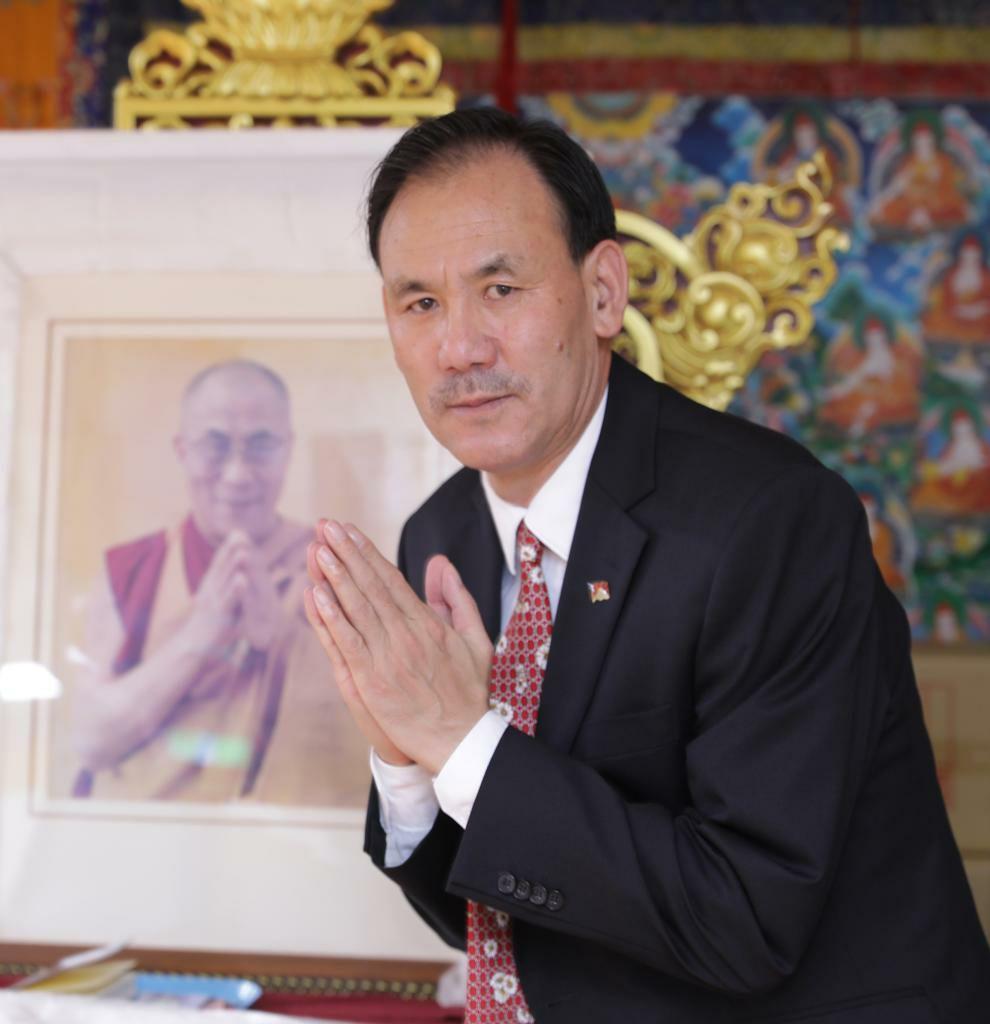
Demolition
The demolition started on Dec. 12, 2021, and lasted nine days, Radio Free Asia (RFA) reported on Jan. 5. Besides the statue, the regime also destroyed 45 prayer wheels, which are cylindrical wheels on a spindle that Tibetan prayers use every day to express their sincere devotion to buddhas.“Tibetan residents from other villages were also forced to go there to watch the process,” an India-based Tibetan told RFA. “[The regime] deployed many policemen to the site, to prevent the people from taking photos, video, or creating disturbances.”
Another Tibetan who lives in India told RFA that the demolition “was performed in a very disrespectful way … The statue has been almost totally destroyed. The regime said watching the process could give the Tibetan people a lesson.”
A Tibetan from Luhuo county said that some local Tibetans spent about 40 million yuan ($6.27 million) to build the statue. The regime approved the project but revoked the approval by claiming that the statue is too tall.
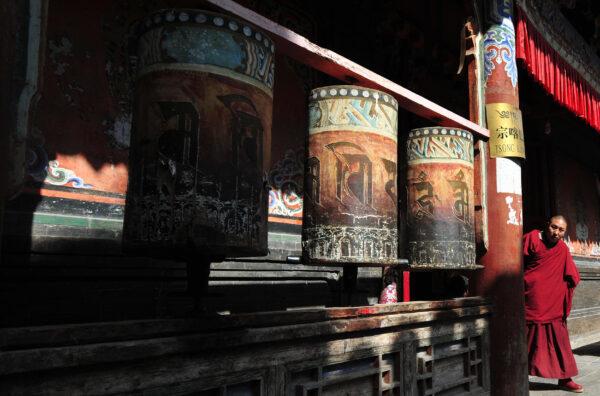
Eradicating Identity
Gyaltsen said the CCP is destroying the Tibetan people’s identity of being Tibetan. He urged the international community to give the Tibetan people a hand.“Since several years ago, [the regime] has forced the Tibetan children to go to school. These schools are like concentration camps, which don’t allow the children to go home frequently, only teach Mandarin Chinese, and don’t allow anybody to speak Tibetan,” Gyaltsen said.
In Tibet, temples are schools that teach Tibetan morals, etiquette, culture, and knowledge. Monks in one temple communicate and learn from monks from other temples. The schools that the regime built in Tibetan regions are teaching brainwashing materials that were written and approved by the CCP.
“The regime launched a system named localized Buddhism management, in which it doesn’t allow monks to contact monks from other temples, and young Tibetans aren’t allowed to go to temples … The regime has set up so-called Buddhist Academies, which are like CCP schools and teach students the CCP theories,” Gyaltsen said.
The CCP forces Tibetan people to worship CCP leaders when they worship Buddhas.
“Starting from around 2011 or 2012, the regime ordered all temples to hang up portraits of CCP leaders. If you want to worship a Buddha, you have to worship the CCP leaders,” Gyaltsen added.
The Chinese regime doesn’t allow Tibetan worship of the Dalai Lama, Tibet’s highest spiritual leader and retired Tibetan political leader in exile, by banning people from having any of the Dalai Lama’s portraits or photos.
In addition to removing the Dalai Lama’s photos, the Chinese regime ordered Tibetan temples and homes to hang its leaders’ portraits. Now, Tibetan people have to hang the portraits of the regime’s founder Mao Zedong and the current leader Xi Jinping.
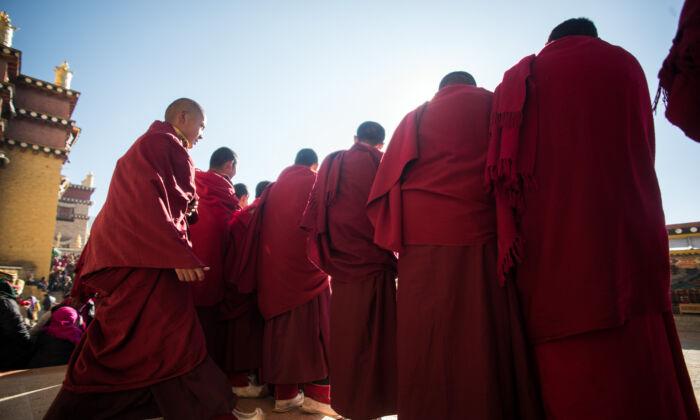

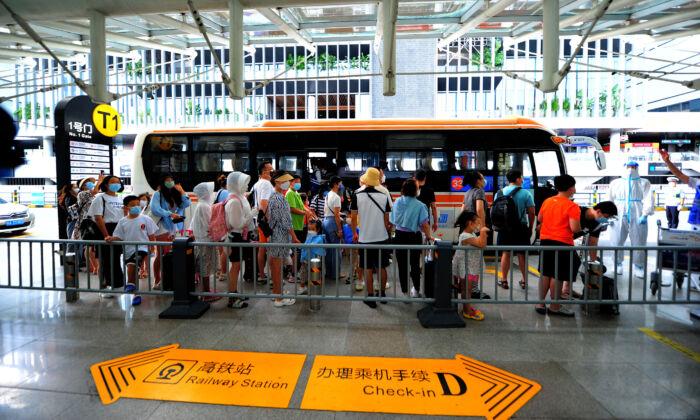
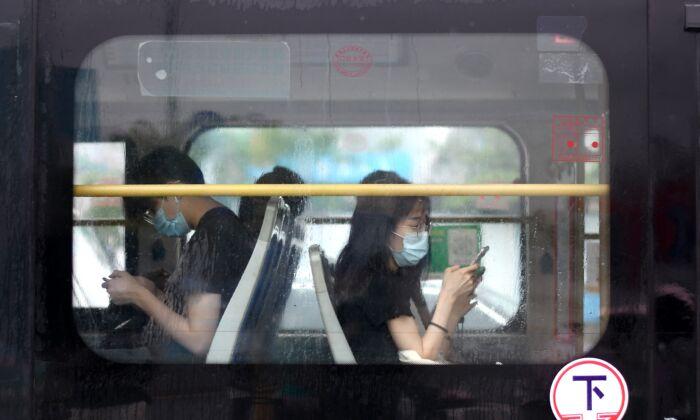
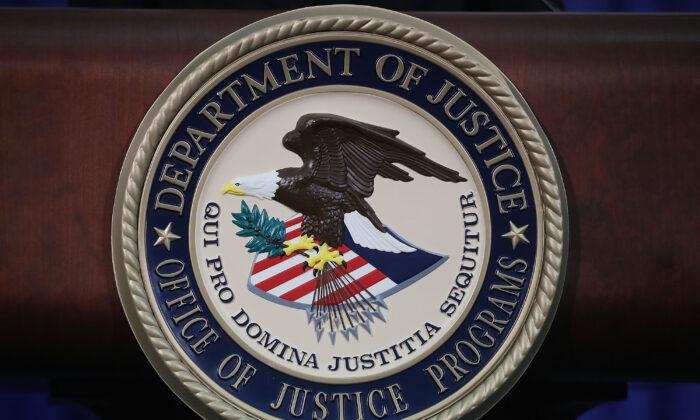
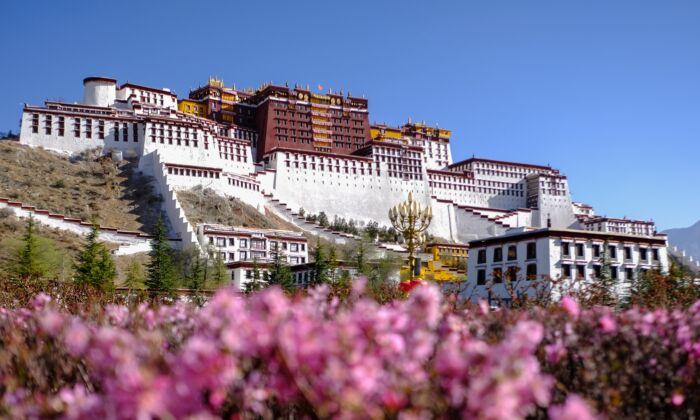
Friends Read Free